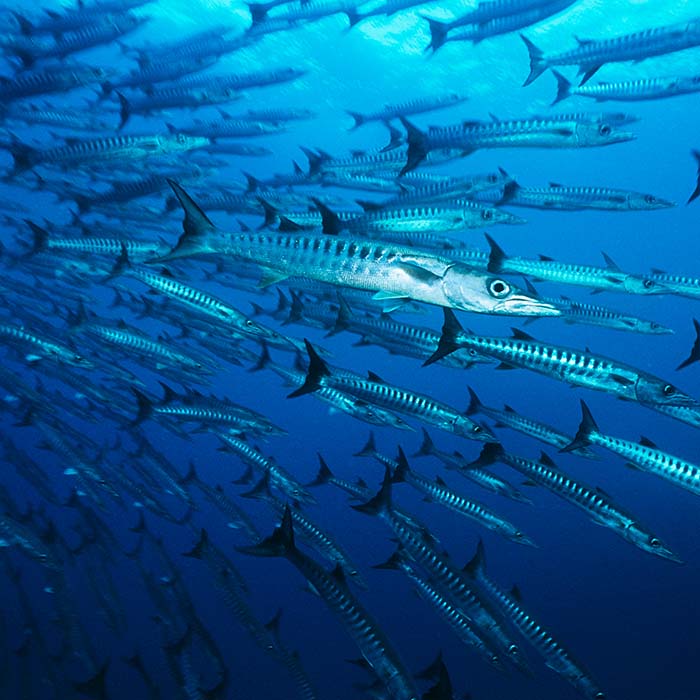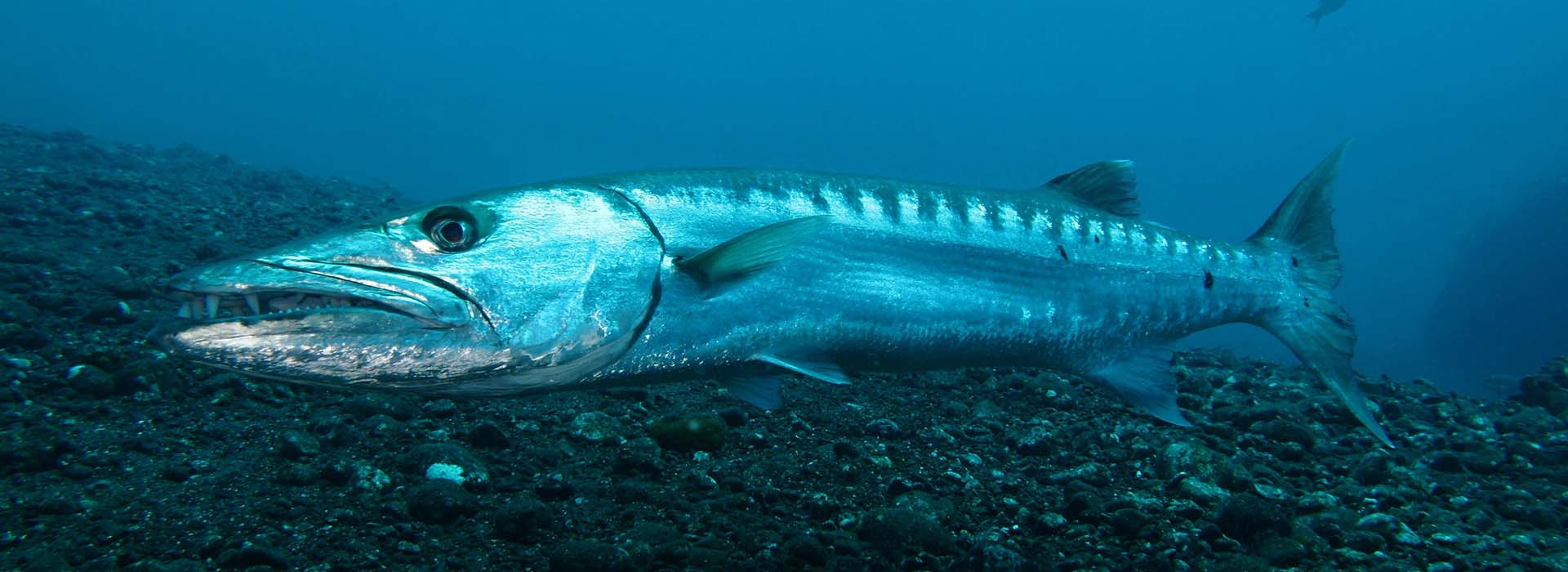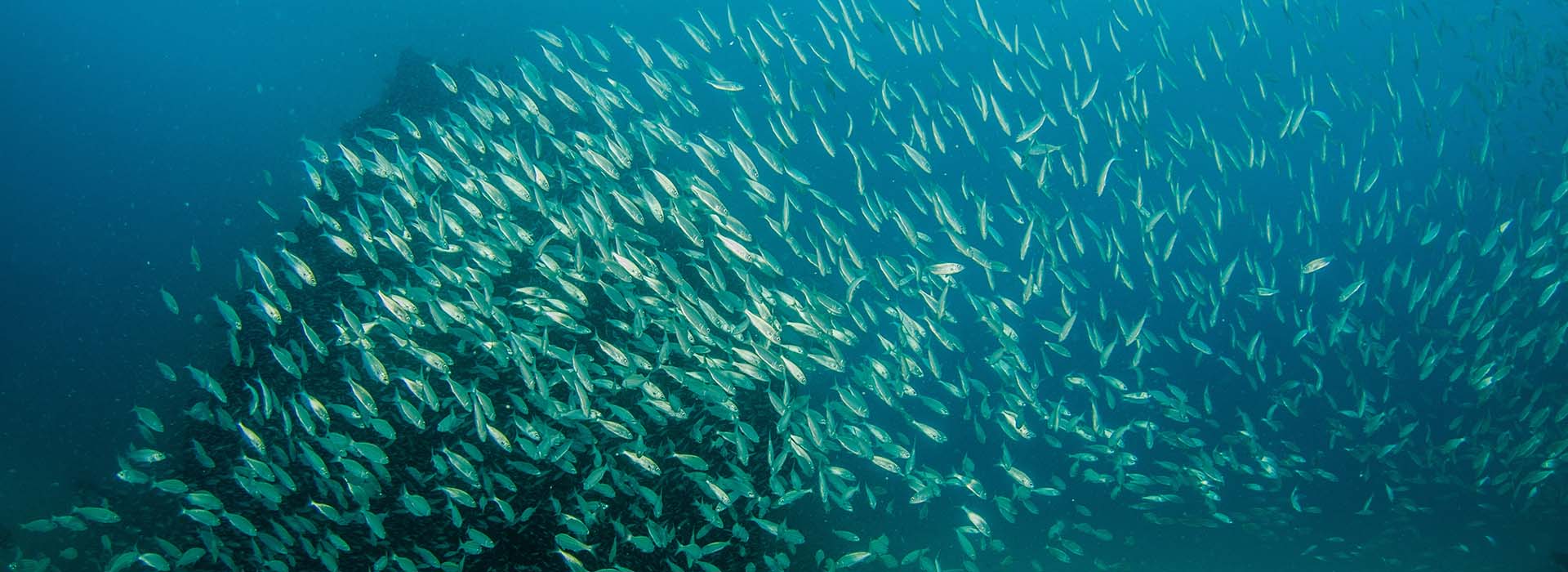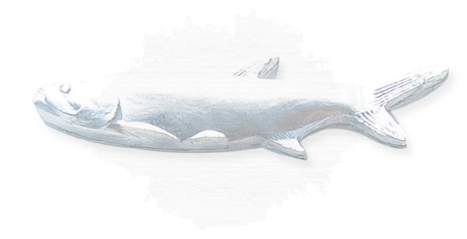Barracudas are among the most feared marine creatures for those who don’t spend much time in the water, but not for those who crave underwater encounters with these misunderstood creatures. Many divers might agree that their appearance can be frightening at first — with fang-like teeth, it’s no wonder barracudas are considered brutal predators.
Are they as dangerous as they are perceived to be?
Even though they look fierce and are quite predatory, few attacks on humans have been reported. Barracudas are more famous for being photographic models than as fearsome creatures. Supposedly, a diver’s dream is to be in the middle of a whirlpool of barracudas as they continuously circle around, which can be one of the most memorable experiences in a diver’s life.
Found in warm coastal waters where there is plenty of food, Barracuda is a large species of predatory fish. There are more than 26 different species of barracudas, ranging in size from less than 20 inches to over 6 feet in length. Although they can be found in the deep ocean, they prefer coastal habitats along continental shelves and coral reefs.
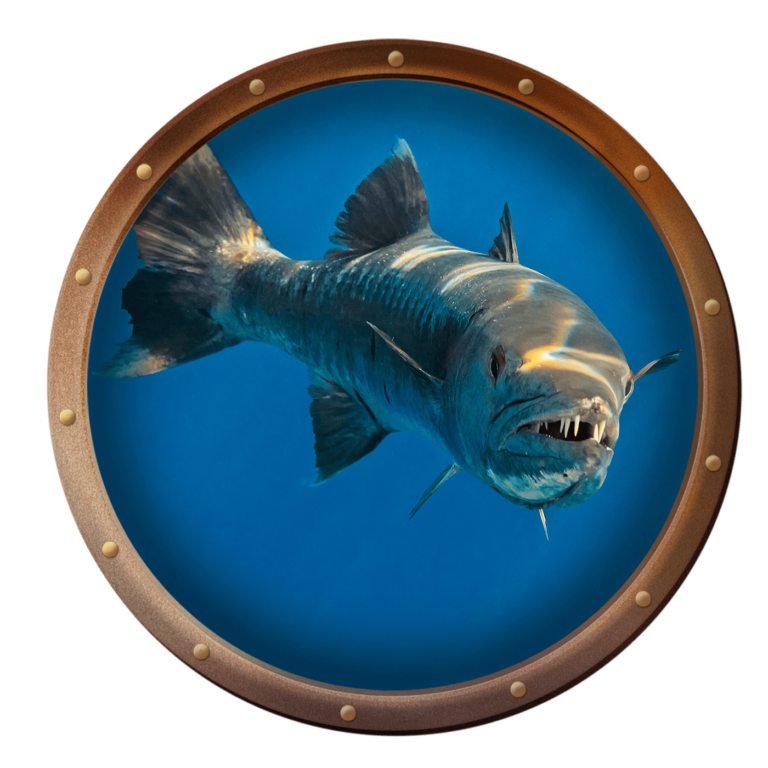
Similar Characteristics
Despite some differences in size and color between barracuda species, they have several similar characteristics: an elongated appearance, pointed head with powerful jaws, rows of sharp fang-like teeth, two separated dorsal fins and a forked tail fin. Barracudas’ bellies are silverish-gray in color, fading to white and black spots on the lower side of their body. They have dark violet caudal fins with whitish tips. Barracudas have between 18 to 25 dark bars on their upper side and two dark bars or tips on their lower and upper fins. As with most fish, barracuda do not have eyelids, so if you see one moving very slowly, they may be asleep. Shh! However, they are still alert to danger when sleeping, so try not to disturb them. Barracudas usually reach about 5 to 6 feet in length and weigh upward of 110 lbs. The age of a barracuda can be determined from the number of rings produced each year in its scales. Fun fact: Barracudas can live up to 14 years.
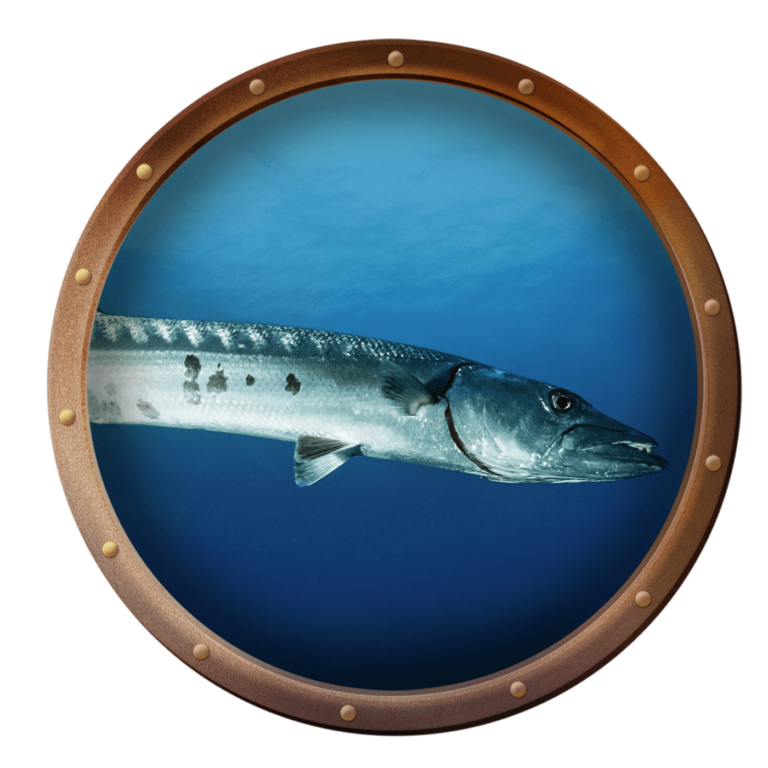
The barracuda is an opportunistic predator, feeding only on other animals in the surrounding water. Because barracudas grow to be very large, they have few natural predators besides sharks, killer whales, larger barracudas, giant tuna and dolphins. They often camouflage near seagrass to ambush unsuspecting prey and move quickly (over 25 mph) through the coral reefs in search of food. They primarily feed on smaller fish, such as snapper, grunts, mullets and bream.
Reproduction
There is not much information on the barracuda’s reproduction. Still, we do know that female barracuda spawn during the spring. The female releases eggs into the water, which are then fertilized externally. Barracuda spawning happens between April and September. Throughout the breeding season, females spawn a few times, releasing about 5,000 to 300,000 eggs each time. Like most other fish, barracudas leave fertilized eggs floating in the open waters until they hatch. Soon after hatching, the larvae will settle in shallow waters where vegetation offers protection and food until they grow into juveniles. When they reach maturity, they move to deeper waters with reefs and remain there for the rest of their lives. Males mature sexually within the first three years of their lives, but females take about four years.
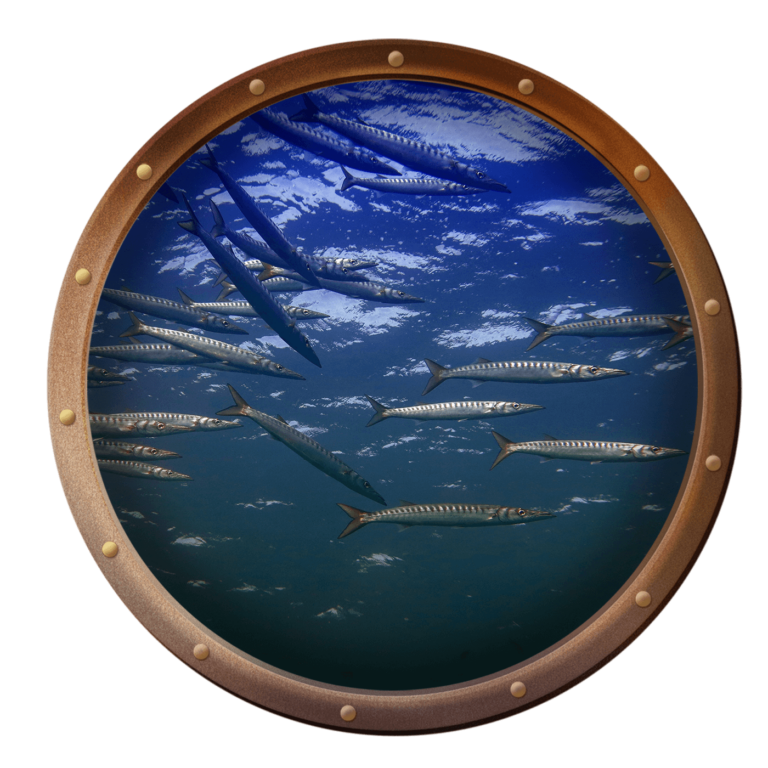
Adult barracudas are solitary when it comes to hunting, while most juveniles gather in large schools of up to hundreds or even thousands of fish. Schooling protects the juveniles from predators. When a predator attacks a school, the school forms a spinning vortex, preventing any barracuda from being fixed upon as prey. A large school means sharing smaller portions of food, but it has the benefits of protection and food detection.
Barracudas can be eaten as steak or filet, smoked or used in soups, though not necessarily recommended. Scientific reports have shown that their flesh contains high mercury and cadmium levels, which can cause ciguatera poisoning.
*Ciguatera is a kind of food poisoning. The toxins come from species of algae eaten by marine fish in tropical/subtropical waters. These toxins build up naturally in the bodies of fish, eventually being hunted by other predators, where they become more concentrated. Ciguatera is passed on to humans through direct consumption of fish meat.
